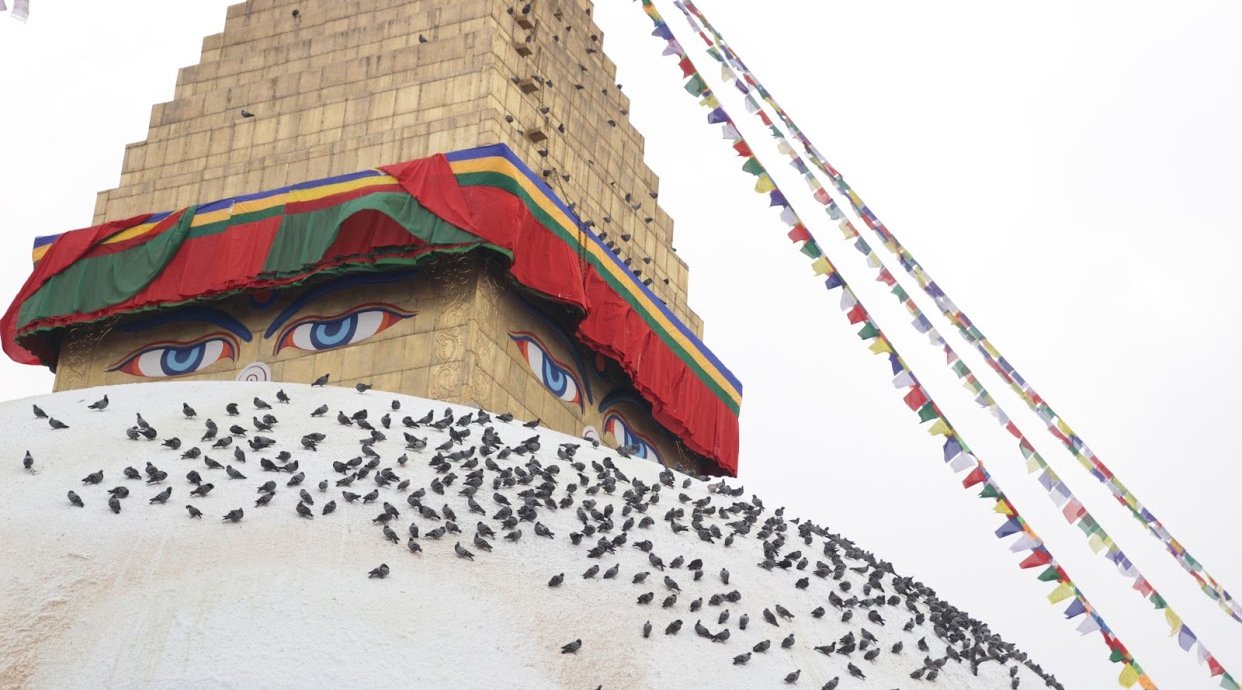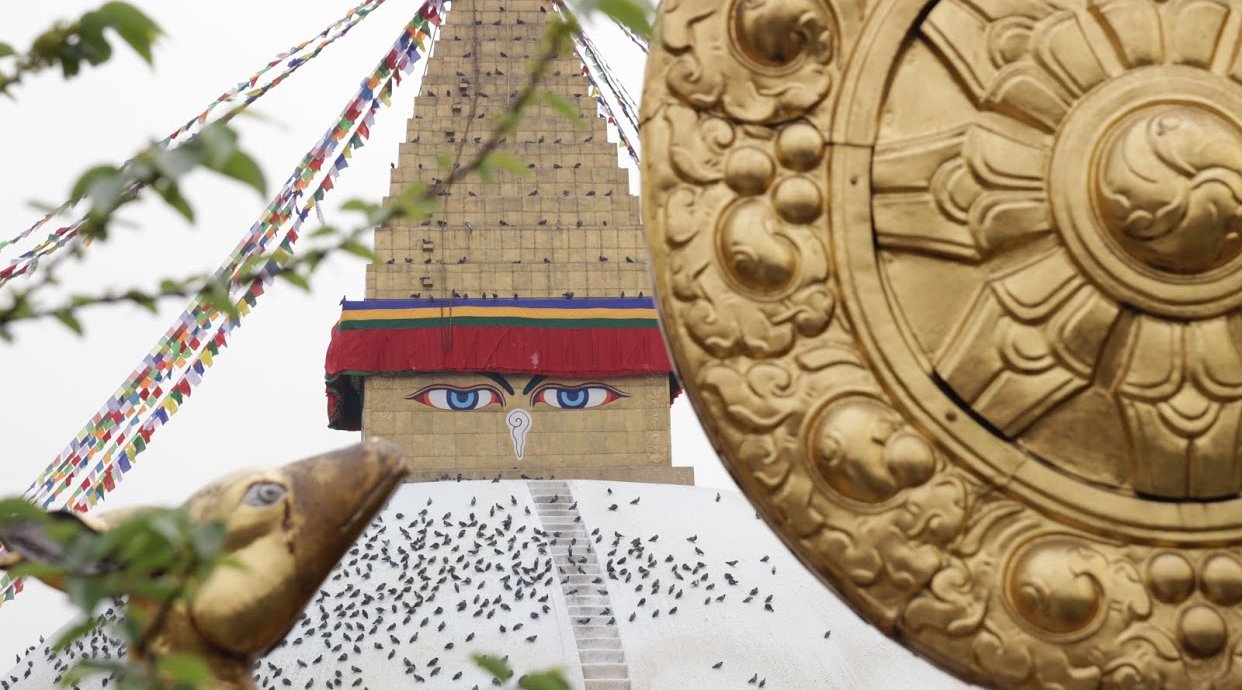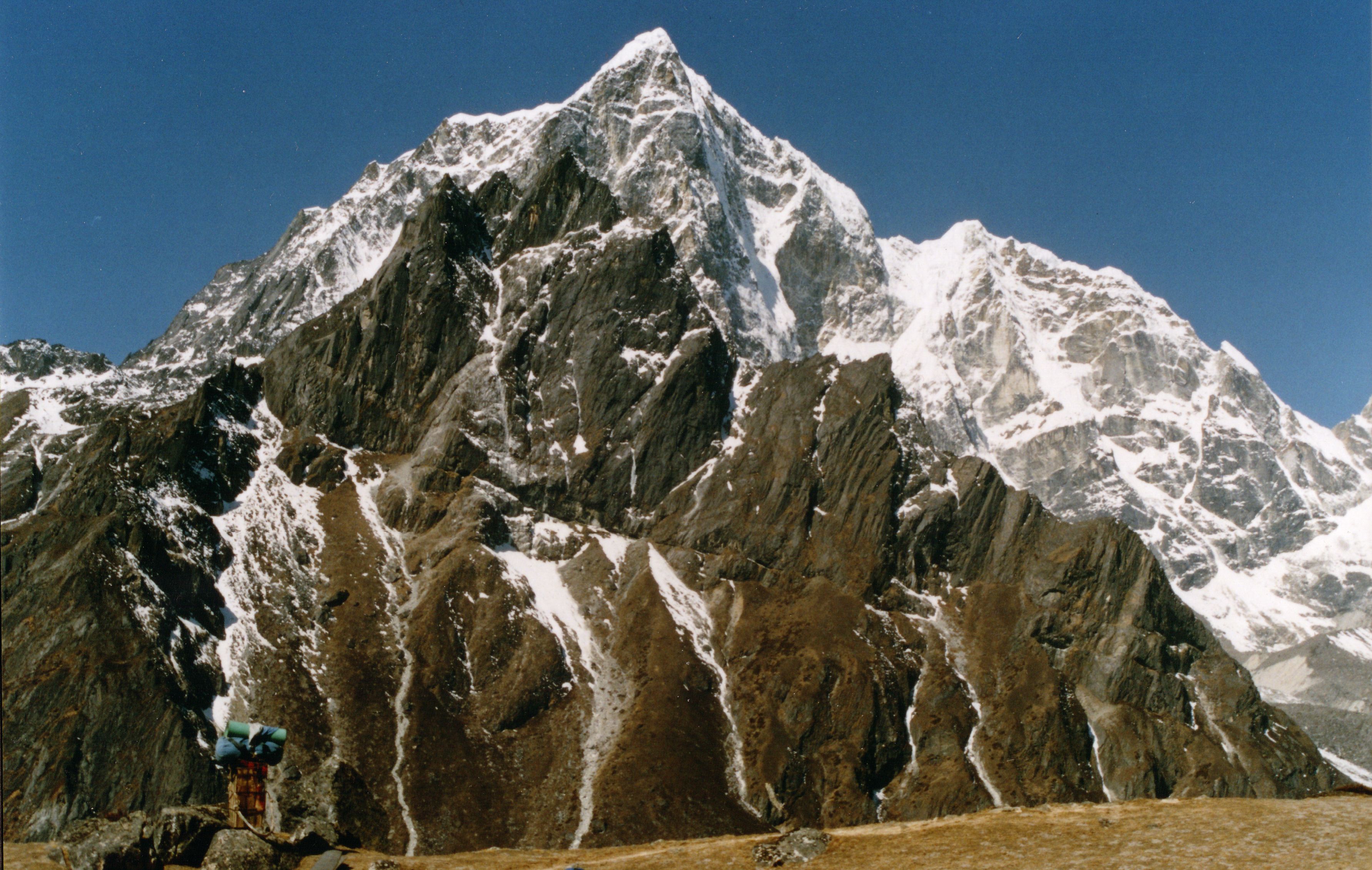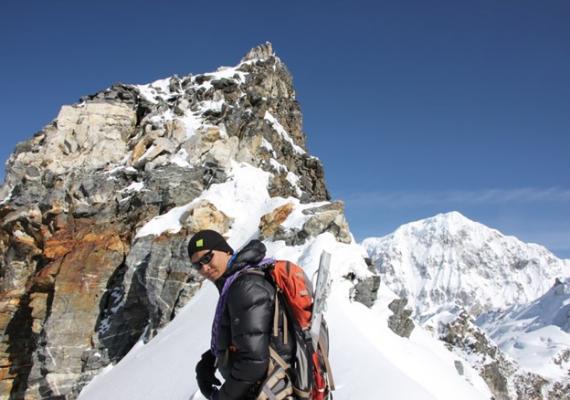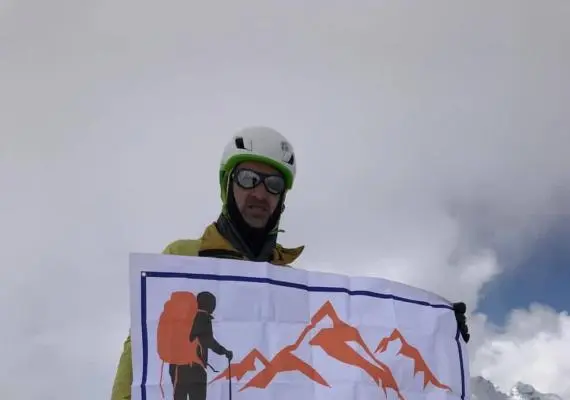Ready to step into living history? Kathmandu's Seven UNESCO World Heritage Sites aren't just monuments—they're breathing, praying, celebrating pieces of Nepal's soul. Imagine walking through palace courtyards where kings once ruled, climbing temple steps worn smooth by millions of pilgrims, and spinning prayer wheels that have turned for centuries.
The Kathmandu Valley UNESCO sites tell a story that spans over 2,000 years. Here, Hindu and Buddhist traditions blend seamlessly, creating a cultural tapestry found nowhere else on Earth. These seven sites earned their UNESCO World Heritage Sites Nepal designation in 1979, recognizing their outstanding universal value to humanity.
What makes these sites truly special? They're not museum pieces frozen in time. Local people still worship at these temples, artisans craft in ancient workshops, and festivals bring these spaces alive with color and devotion. You'll experience cultural heritage that pulses with daily life—where spirituality and community intersect at every corner.
From the all-seeing eyes of Buddha gazing from hilltop stupas to intricate wood carvings that seem to defy gravity, each site offers unique treasures. Whether you're drawn to the Hindu temples Kathmandu offers or the peaceful Buddhist stupas Kathmandu is famous for, this journey through seven UNESCO sites will transform how you see Nepal's capital.
Trip Highlights
- 360-degree valley views from Swayambhunath's hilltop perch
- Sunrise prayers at Boudhanath with thousands of devotees
- Sacred cremation ceremonies at Pashupatinath (observed respectfully)
- Living Goddess glimpses at Kathmandu Durbar Square
- Master craftsmen at work in Patan's artisan quarters
- Medieval atmosphere in car-free Bhaktapur
- Ancient inscriptions dating to 464 AD at Changu Narayan
- Newari architecture showcasing wood, brick, and metal mastery
- Active religious sites where daily worship continues
- Earthquake resilience stories and ongoing restoration efforts
Brief Itinerary Overview
Day 1: Kathmandu City Sites
- Morning: Swayambhunath Temple (2-3 hours)
- Late morning: Kathmandu Durbar Square (2-3 hours)
- Afternoon: Boudhanath Stupa (2-3 hours)
- Evening: Sunset at Pashupatinath Temple
Day 2: Patan and Bhaktapur
- Morning: Patan Durbar Square (3 hours)
- Afternoon: Bhaktapur Durbar Square (3-4 hours)
- Optional pottery workshop experience
Day 3: Changu Narayan
- Morning: Changu Narayan Temple (2 hours)
- Hiking option to/from Bhaktapur
- Afternoon: Revisit favorite sites or explore museums
Swayambhunath Temple (The Monkey Temple)
History and Sacred Architecture
Perched atop a hill west of Kathmandu, Swayambhunath Temple watches over the valley like an ancient guardian. The name means "self-sprung"—legend says the hill emerged spontaneously from a primordial lake, with the stupa manifesting naturally atop it.
Dating back over 2,000 years, this Monkey Temple (nicknamed for its resident macaque population) represents one of Nepal's oldest religious sites. The main stupa underwent major renovations in the 14th century, but its foundations reach into prehistory.
Architectural highlights:
- The golden spire (gajur) crowned with Buddha's all-seeing eyes
- 13 tiers representing stages to enlightenment
- Five Buddha statues representing cosmic elements
- Numerous smaller stupas and shrines
- Mix of Hindu and Buddhist iconography
The famous Buddha eyes gaze out in four directions, while the "nose" is actually the Nepali number one, symbolizing unity. Above, a third eye represents Buddha's divine wisdom.
What to See and Experience
Your visit begins with a choice: tackle the 365 stone steps from the eastern entrance (one for each day of the year) or take the vehicle road to the western entrance. Either way rewards you with incredible views.
Must-see features:
- The main stupa - circumambulate clockwise while spinning prayer wheels
- Harati Temple - dedicated to the goddess of smallpox and children
- Natural History Museum - quirky collection in an unexpected location
- Tibetan monasteries - several surround the main complex
- Panoramic viewpoint - best valley views in Kathmandu
Wildlife encounters: The monkeys here aren't just decoration—they're considered holy, descendants of the lice that fell from Manjushri's hair. Watch your belongings though; these sacred simians are notorious thieves!
Best experiences:
- Sunrise visits for golden light on the stupa
- Full moon evenings when locals light butter lamps
- Saturday mornings for increased local worship
- Festival times (especially Buddha Jayanti)
Practical Visitor Information
Entry fee: NPR 200 for foreign nationals¹ Opening hours: 24/7 (ticket booth 5 AM - 6 PM) Time needed: 2-3 hours minimum
Getting there:
- 30-minute walk from Thamel
- Taxi: NPR 300-400 from city center
- Local bus: NPR 20 from Ratna Park
Tips for visiting:
- Start early to avoid crowds and heat
- Bring water—the climb is steep
- Secure cameras and snacks from monkeys
- Wear modest clothing (shoulders/knees covered)
- Photography allowed everywhere except inside shrines
Boudhanath Stupa: Asia's Largest Stupa
Buddhist Heritage and Significance
Standing 36 meters tall, Boudhanath Stupa commands attention as one of the largest spherical stupas in Asia. This massive mandala represents the Buddhist cosmos, with every element holding deep symbolic meaning.
Built in the 14th century (though possibly earlier), Boudhanath became the heart of Tibetan Buddhism in Nepal. After the 1959 Tibetan uprising, thousands of refugees settled here, transforming the area into "Little Tibet."
Symbolic architecture:
- The base represents earth
- The dome symbolizes water
- The spire's 13 levels show the path to enlightenment
- The umbrella at top represents air
- The pinnacle symbolizes ether
Local legend tells of a poor poultry keeper who asked the king for land to build a stupa. He agreed she could have whatever area a buffalo hide covered. Cleverly, she cut the hide into thin strips, enclosing a vast area—hence the stupa's impressive size!
The Kora Walk and Prayer Wheels
The spiritual heart of Boudhanath beats strongest during the kora—the ritual circumambulation performed by thousands daily. Join the clockwise flow of humanity: monks in maroon robes, elderly Tibetans with prayer beads, locals rushing to work, all united in this ancient practice.
Kora highlights:
- 108 prayer wheels in the outer wall
- 147 prayer wheel niches with images
- Butter lamp offerings at designated areas
- Prostration platforms for devoted practitioners
- Hidden meditation caves in surrounding buildings
Peak kora times:
- Dawn (5-7 AM): Serious practitioners and locals
- Dusk (5-7 PM): After-work crowds and tourists
- Full moon evenings: Special prayers and lamp lighting
- Losar (Tibetan New Year): Incredible atmosphere
The surrounding streets offer:
- Over 50 Tibetan monasteries
- Traditional thangka painting schools
- Tibetan handicraft shops
- Rooftop restaurants with stupa views
- Meditation centers welcoming visitors
Visiting Tips and Best Times
Entry fee: NPR 400 for foreign nationals² Opening hours: 24/7 (ticket booth 5 AM - 7 PM) Time needed: 2-4 hours
Best times to visit:
- Early morning for prayers and photography
- Late afternoon for golden hour light
- During festivals (Losar, Buddha Jayanti)
- Avoid midday heat in summer
Getting there:
- 6 km from city center
- Taxi: NPR 400-500 from Thamel
- Walking: Pleasant 45-minute stroll from Pashupatinath
Insider tips:
- Climb to rooftop restaurants for aerial views
- Join evening prayers at Shechen Monastery
- Visit during Saturday for Tibetan weekend market
- Try Tibetan momo and butter tea nearby
- Purchase prayer flags to hang with locals
Pashupatinath Temple: Nepal's Holiest Hindu Site
Sacred Cremation Ghats
Along the sacred Bagmati River, Pashupatinath Temple serves as Nepal's most important Hindu pilgrimage site. Here, life and death intertwine daily at the cremation ghats, where families perform last rites while sadhus meditate nearby.
The main temple, rebuilt in 1692, stands on foundations dating to 400 AD. While non-Hindus cannot enter the main temple, the complex offers profound experiences for all visitors. The architecture showcases the pinnacle of pagoda design, with two-tiered golden roofs and silver-plated doors.
The ghats experience:
- Arya Ghat: Reserved for royal cremations
- Public ghats: Active cremation platforms
- Viewing areas: Respectful observation points
- Evening aarti: Daily ceremony with lamps and chanting
Witnessing cremations requires sensitivity. These aren't tourist performances but deeply personal family moments. Observe quietly from designated areas, avoid pointing or close-up photography, and remember you're witnessing sacred traditions.
Temple Complex and Spiritual Significance
Beyond the main temple, the complex sprawls across both riverbanks with over 500 monuments, shrines, and inscriptions. Each tells part of Hinduism's rich tapestry in Nepal.
Key areas to explore:
- Eastern bank (main temple side):
- Ram Temple complex
- Hanuman statues
- Countless Shiva lingams
- Sadhus' meditation platforms
- Western bank (visitor accessible):
- Terraced viewing areas
- 15 votive shrines (Pandra Shivalaya)
- Peaceful gardens
- Small museums
Spiritual significance: Lord Shiva resides here as Pashupati—"Lord of Animals." Devotees believe dying here ensures liberation from rebirth. The temple draws pilgrims from across the Hindu world, especially during Maha Shivaratri when over one million worshippers arrive.
Living traditions:
- Sadhus (holy men) in residence
- Daily worship rituals (4 AM start)
- Monthly festivals
- Special full moon ceremonies
- Constant flow of devotees
Visitor Guidelines and Cultural Sensitivity
Entry fee: NPR 1,000 per entry for foreign nationals³ Opening hours: 4 AM - 9 PM (main temple Hindus only) Time needed: 2-3 hours
Cultural guidelines:
- Dress modestly (long pants/skirts, covered shoulders)
- Remove shoes before entering shrines
- Ask permission before photographing people
- Don't touch offerings or religious objects
- Maintain respectful silence near ceremonies
What you can access:
- Western bank completely
- Eastern bank outer areas
- Observation terraces
- Museum and information center
- Surrounding forest paths
Getting there:
- 5 km from city center
- Taxi: NPR 300-400 from Thamel
- Walking: 30 minutes from Boudhanath
Best times:
- Early morning for rituals
- Evening for aarti ceremony
- Monday (Shiva's day) for local atmosphere
- Avoid Saturday crowds
Kathmandu Durbar Square: Royal Legacy
Palace Complex and Living Goddess
At the heart of old Kathmandu, Kathmandu Durbar Square showcases centuries of royal patronage and Newari craftsmanship. Though the 2015 earthquake damaged many structures, restoration efforts continue, and the square remains vibrantly alive.
The complex served as the royal palace until 1886, with construction spanning the 12th to 18th centuries. Today, it houses museums, active temples, and the residence of the Kumari—Nepal's living goddess.
Palace highlights:
- Hanuman Dhoka (main palace):
- Named for the monkey deity statue at entrance
- Nine courtyards (some restricted)
- Tribhuvan Museum showcasing royal history
- King Mahendra Memorial Museum
- Kumari Ghar (Living Goddess residence):
- Exquisite carved windows
- Brief appearances at scheduled times
- Photography prohibited of Kumari
- Beautiful inner courtyard
The Living Goddess tradition: Selected from the Shakya clan between ages 3-5, the Kumari embodies the goddess Taleju. She appears at her window briefly (usually 9 AM and 4 PM) and during festivals. Her feet never touch the ground outside—she's carried everywhere until retirement at puberty.
Newari Architecture at Its Finest
The square exemplifies Newari craftsmanship at its peak, with intricate wood carvings that seem impossible even today. Master craftsmen spent decades creating single windows or doorways.
Architectural masterpieces:
- Kasthamandap (destroyed 2015, being rebuilt):
- Legendary structure from single tree
- Gave Kathmandu its name
- Community gathering space
- Shiva-Parvati Temple:
- Divine couple gazing from window
- Popular photo opportunity
- 18th-century construction
- Jagannath Temple:
- Erotic carvings on roof struts
- Oldest structure in square (16th century)
- Active worship continues
Artistic details to notice:
- Roof struts depicting deities
- Window frames with 100+ pieces
- Metal work on temple pinnacles
- Stone sculptures and inscriptions
- Geometric patterns in brickwork
Earthquake Impact and Restoration
The April 2015 earthquake devastated the square, destroying or damaging over half its monuments. Yet this wasn't the first reconstruction—earthquakes in 1833 and 1934 caused similar destruction.
Current status:
- Major structures rebuilt/reinforced
- Some areas still under scaffolding
- Traditional techniques being revived
- International cooperation in restoration
- Improved earthquake resistance
Entry fee: NPR 1,000 for foreign nationals⁴ Opening hours: 8 AM - 5 PM (some temples 24/7) Time needed: 2-3 hours
Visitor tips:
- Morning light best for photography
- Guides available at entrance (negotiate price)
- Rooftop cafes offer aerial views
- Evening brings local worshippers
- Ticket valid for multiple entries (register at office)
Patan Durbar Square: City of Fine Arts
The Museum and Palace Courtyards
Known locally as Lalitpur (City of Beauty), Patan Durbar Square showcases the finest collection of Newari architecture in the valley. The former royal palace now houses one of Asia's best museums, while the surrounding temples create an open-air gallery of artistic achievement.
Patan Museum highlights:
- Gallery organization by theme not chronology
- The Stolen Images exhibition
- Traditional architecture preserved within
- Excellent descriptions in English
- Photography allowed (no flash)
The palace courtyards reveal layers of history:
- Mul Chowk (1666): Largest and oldest courtyard
- Sundari Chowk: Features the stunning Tusha Hiti (royal bath)
- Keshav Narayan Chowk: Museum's main galleries
- Mani Keshar Chowk: Garden courtyard
Architectural treasures:
- Krishna Mandir (1637): Stone temple with 21 spires
- Bhimsen Temple: Dedicated to trade and strength
- Vishwanath Temple: Two-story pagoda perfection
- Golden Temple (300m north): Hidden Buddhist monastery
Ancient Water Spouts and Temples
Patan's ancient water spouts (hiti) showcase hydraulic engineering centuries ahead of its time. These ornate fountains still provide water to locals, combining utility with artistic beauty.
Notable water features:
- Manga Hiti: Royal spout with crocodile heads
- Sundhara (Golden Spout): Gilded waterspouts
- Countless neighborhood hiti: Each uniquely decorated
Temple diversity: Unlike other squares dominated by Hindu structures, Patan blends:
- Hindu temples and shrines
- Buddhist stupas and monasteries
- Syncretic structures honoring both
- Community gathering spaces
- Active neighborhood shrines
Artisan Workshops and Crafts
Patan's reputation as the city of fine arts lives on in its workshops. Behind the square's tourist facade, artisans continue centuries-old traditions.
Traditional crafts to explore:
- Metal work (repoussé technique):
- Visit Mahabouddha area workshops
- See craftsmen hammering deity figures
- Custom orders possible
- Wood carving:
- Window frames and doorways
- Restoration pieces for temples
- Small souvenirs to large installations
- Stone sculpture:
- Traditional techniques preserved
- Modern interpretations available
- Thangka painting:
- Several schools near square
- Observe artists at work
Entry fee: NPR 1,000 for foreign nationals⁵ Museum: Additional NPR 250 (highly recommended) Opening hours: Square 24/7, Museum 10:30 AM - 5 PM (until 4 PM winter) Time needed: 3-4 hours with museum
Getting there:
- 5 km from Kathmandu center
- Taxi: NPR 400-500 from Thamel
- Local bus: NPR 20 from Ratna Park
- Pleasant walk from Kathmandu Durbar Square (45 minutes)
Bhaktapur Durbar Square: Medieval Marvel
The 55-Window Palace
Step through Bhaktapur's ancient gates and travel back 500 years. This medieval marvel preserves the valley's most authentic atmosphere, thanks partly to vehicle restrictions and dedicated preservation efforts.
The magnificent 55-Window Palace (1427-1480) exemplifies Malla dynasty grandeur:
- The Golden Gate (1754): Nepal's artistic pinnacle
- 55 carved windows: Each unique, counting them brings good luck
- Naga Pokhari (royal bath): Snake-decorated water tank
- National Art Gallery: Upper floors showcase religious art
Architectural highlights:
- Nyatapola Temple: Five-story pagoda, valley's tallest
- Bhairavnath Temple: Dedicated to Bhairav's fearsome form
- Dattatreya Square (eastern section): Oldest part of city
- Mini Pashupatinath: Replica for those who can't reach the original
The square's spaciousness sets it apart—you can actually step back and admire buildings without crowds pressing in.
Pottery Square and Traditional Life
Beyond the main square, Bhaktapur's living culture thrives. Pottery Square offers hands-on encounters with ancient crafts:
Pottery Square experiences:
- Watch potters throwing vessels
- Thousands of pots drying in sun
- Try making your own (NPR 200-300)
- Traditional kilns still operating
- Finished products for sale
Traditional life glimpses:
- Grain drying in courtyards
- Women in traditional dress
- Neighborhood shrines with daily worship
- Peacocks on ancient rooftops
- Festival preparations year-round
Local specialties:
- Juju dhau (king curd): Creamy yogurt in clay pots
- Bhaktapur black caps: Traditional Newari headwear
- Wooden masks: Carved for festivals
- Peacock windows: Iconic carved designs
Why Bhaktapur Feels Different
Several factors preserve Bhaktapur's unique atmosphere:
Preservation efforts:
- German-funded restoration project (1974-1986)
- Vehicle restrictions in core areas
- Traditional building codes enforced
- Tourism revenue reinvested locally
- Community pride in heritage
Entry fee: US $18 (~NPR 1,800) for foreign nationals⁶ Opening hours: 24/7 (ticket booth 7 AM - 7 PM) Time needed: Half day minimum Multi-day pass: Available with photo at ticket office
Getting there:
- 13 km east of Kathmandu
- Tourist bus: NPR 500 from Thamel
- Local bus: NPR 50 from Kamal Pokhari
- Taxi: NPR 1,500-2,000 one way
Best experiences:
- Sunrise from Nyatapola Temple steps
- Evening when day-trippers leave
- During festivals (Bisket Jatra in April)
- Winter morning fog creating mystical atmosphere
- Staying overnight to experience true calm
Changu Narayan Temple: The Oldest Temple
Ancient Stone Inscriptions
Perched on a hilltop 12 km east of Kathmandu, Changu Narayan Temple rewards those who venture beyond the valley's main sites. This oldest temple in the valley houses Nepal's earliest stone inscription (464 AD), making it invaluable for historians.
Historical significance:
- Original construction: 4th century AD
- Current structure: 1702 (after fire)
- Stone inscriptions: 5th-6th century
- Licchavi period artifacts
- Continuous worship for 1,600+ years
Inscription treasures:
- Pillar inscription of King Manadeva (464 AD)
- Details of military victories
- Early Nepali script examples
- Sanskrit and ancient Newari text
- Historical records of valley life
The temple's artistic wealth includes:
- Garuda statue (5th century)
- Vishnu in various incarnations
- Intricate roof struts
- Metal repoussé work
- Stone sculptures in courtyard
Hilltop Views and Village Walk
The temple's hilltop location offers spectacular valley views and a glimpse into rural life just outside Kathmandu.
Viewpoints and walks:
- Valley panorama: All three ancient cities visible
- Himalayan views: Clear days reveal snow peaks
- Village walk: Traditional Newari settlement
- Hiking trail: Connect to Bhaktapur (2 hours)
- Terraced fields: Seasonal agricultural beauty
Village experiences:
- Traditional houses unchanged for centuries
- Local artisans creating religious items
- Small family restaurants
- Minimal tourist presence
- Authentic rural atmosphere
Getting There and What to Expect
Entry fee: NPR 300 for foreign nationals⁷ Opening hours: 7 AM - 6 PM Time needed: 2-3 hours with village walk
Transportation options:
- Taxi: NPR 2,000-2,500 round trip
- Local bus to base + uphill walk
- Hike from Bhaktapur (recommended)
- Motorbike rental for adventurous
What to expect:
- Steep climb if walking from parking
- Limited facilities (bring water)
- Local guides available (optional)
- Photography restrictions inside temple
- Peaceful atmosphere compared to other sites
Best combined with:
- Bhaktapur visit (same day possible)
- Nagarkot sunrise (if staying overnight)
- Valley rim hiking
- Rural village experiences
Planning Your UNESCO Sites Tour
Entry Fees and Ticket Information
Visiting UNESCO sites Kathmandu requires budgeting for multiple entry fees. Here's the complete breakdown:
Current entry fees for foreign nationals:
- Kathmandu Durbar Square: NPR 1,000¹
- Patan Durbar Square: NPR 1,000⁴
- Bhaktapur Durbar Square: USD 18 (~NPR 1,800)⁵
- Swayambhunath Stupa: NPR 200¹
- Boudhanath Stupa: NPR 400²
- Pashupatinath Temple: NPR 1,000³
- Changu Narayan Temple: NPR 300⁶
- Total: Approximately NPR 5,700 (USD 45-50)
Money-saving tips:
- Some tickets allow multiple entries (get stamped)
- Student discounts available with ID
- SAARC country citizens pay reduced rates
- Children under 10 often free
- Group discounts negotiable at some sites
Payment notes:
- Cash only at most sites
- NPR preferred (better exchange rate)
- Exact change helpful
- Keep tickets for inspection
Transportation Between Sites
How to visit Kathmandu's UNESCO sites efficiently depends on your time and budget:
Option 1: Private vehicle with driver
- Cost: NPR 5,000-7,000 per day
- Pros: Flexible, comfortable, time-efficient
- Best for: Short visits, older travelers
Option 2: Taxi hopping
- Use meter or negotiate fare
- Download local ride apps
- Typical fares between sites: NPR 300-500
- Always confirm price before starting
Option 3: Local transportation
- Buses: NPR 20-50 per ride
- Tempos (three-wheelers): Slightly more
- Adventure and cultural immersion
- Requires patience and flexibility
Option 4: Walking + strategic transport
- Kathmandu-Patan walkable (45 minutes)
- Swayambhunath-Kathmandu Durbar walkable
- Use transport for longer distances
- Most rewarding for fit travelers
Best Times to Visit Each Site
Timing dramatically impacts your experience at each location:
Early morning (6-9 AM):
- Pashupatinath: Morning rituals
- Boudhanath: Prayers and kora
- Bhaktapur: Empty streets, local life
Mid-morning (9 AM-12 PM):
- Durbar Squares: Good light, moderate crowds
- Museums: Just opened, cool inside
- Changu Narayan: Before afternoon heat
Afternoon (12-4 PM):
- Rest during heat
- Indoor museums
- Rooftop restaurants
Late afternoon (4-7 PM):
- Swayambhunath: Sunset views
- Boudhanath: Evening kora
- Durbar Squares: Golden hour photography
Days to avoid:
- Saturday: Local holiday, very crowded
- Festival days: Amazing but packed
- Bandh (strikes): Transportation issues
Cultural Significance and Heritage Value
Understanding Newari Craftsmanship
The Kathmandu Valley cultural heritage owes its richness to the Newar people, the valley's indigenous inhabitants. Their artistic traditions, developed over millennia, created these UNESCO masterpieces.
Newari architectural elements:
- Pagoda style: Nepal gave this to the world
- Wood carving: Intricate window frames (tundal)
- Brick work: Decorative patterns unique to valley
- Metal craft: Repoussé technique perfected here
- Stone sculpture: Blend of Indian and Tibetan influences
Living traditions:
- Guthi system: Community organizations maintaining temples
- Festival cycles: Over 150 festivals annually
- Craft guilds: Knowledge passed through generations
- Ritual practices: Daily worship keeping sites alive
Hindu-Buddhist Syncretism
Nepal's unique religious harmony shines through these sites. Hindu temples Kathmandu and Buddhist stupas Kathmandu often share compounds, with devotees honoring both traditions.
Examples of religious blending:
- Hindu deities in Buddhist monasteries
- Buddha accepted as Vishnu incarnation
- Shared festival celebrations
- Mixed iconography on temples
- Tantric traditions crossing boundaries
This syncretism isn't mere tolerance—it's active integration creating something uniquely Nepali.
Photography and Etiquette Tips
Photography guidelines:
- Most outdoor areas allow photography
- No flash inside temples/museums
- Drone use generally prohibited
- Tripods may require permission
- Respect "No Photo" signs
Best shots:
- Golden hour at all sites
- Festivals for color and action
- Details of carvings and artwork
- Daily life and worship moments
- Panoramic views from elevated spots
Cultural etiquette:
- Remove shoes entering temples
- Walk clockwise around stupas/temples
- Don't touch religious objects
- Dress modestly (covered shoulders/knees)
- Lower voice near worship areas
Interacting with locals:
- Ask permission for portraits
- Small donation appreciated for photos
- Learn basic Nepali greetings
- Respect private worship moments
- Buy from local vendors
Safety and Practical Considerations
General safety:
- Sites generally very safe
- Watch belongings in crowds
- Beware pickpockets at festivals
- Monkeys can snatch items
- Uneven surfaces common
Health considerations:
- Bring water (limited at some sites)
- Sun protection essential
- Comfortable walking shoes
- Rest in shade during heat
- Basic first aid kit helpful
What to bring:
- Small denominations for entry fees
- Hand sanitizer
- Tissues/toilet paper
- Snacks for energy
- Guidebook or downloaded info
Respect and rewards:
- These aren't just tourist sites
- Active worship deserves respect
- Patience with restoration work
- Support local businesses
- Share experiences responsibly
Conclusion: Your Cultural Heritage Adventure Awaits
Kathmandu's Seven UNESCO World Heritage Sites offer more than photo opportunities—they provide profound connections to living history. From dawn prayers at Buddhist stupas to sunset ceremonies at Hindu temples, from medieval squares to hilltop shrines, each site reveals layers of human creativity and devotion.
You've learned about the all-seeing eyes of Swayambhunath, the massive dome of Boudhanath, the sacred ghats of Pashupatinath, and the architectural treasures of three Durbar Squares. You know about the oldest inscriptions at Changu Narayan and understand the Kathmandu Valley cultural heritage that binds these sites together.
These aren't just monuments—they're active spiritual centers where Newari craftsmanship meets daily devotion, where Hindu temples Kathmandu shares with Buddhist stupas Kathmandu create unique religious harmony. The cultural heritage preserved here belongs not just to Nepal but to all humanity.
Ready to Experience These Treasures Yourself?
Your journey through UNESCO World Heritage Sites Nepal starts with a single step. Here's how to begin:
- Book your trip during optimal seasons (October-November or March-April)
- Plan at least 3-4 days for meaningful exploration
- Stay in traditional neighborhoods for cultural immersion
- Hire licensed guides to unlock hidden stories
- Support restoration efforts through responsible tourism
Don't just read about these incredible sites—experience them. Feel ancient stones beneath your feet, spin prayer wheels smoothed by millions of hands, and witness traditions unchanged for centuries.
Take action today: Research flights to Kathmandu, book accommodations near the heritage sites, and prepare for a journey that will change how you see culture, spirituality, and human achievement.
The temples are waiting. The stupas stand ready. Your cultural heritage adventure in the Kathmandu Valley begins now.
Contact Himalayanhero Adventures, join heritage walks, or simply arrive and explore. However you choose to experience these seven UNESCO World Heritage Sites, you'll leave with memories, insights, and connections that last a lifetime.
See you in the squares, temples, and stupas of Kathmandu!

